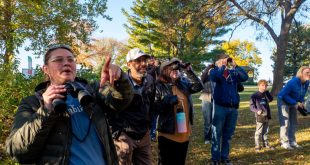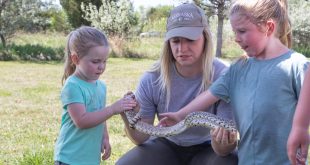How a forest-dwelling shorebird makes a living in Nebraska’s prairies
Enlarge
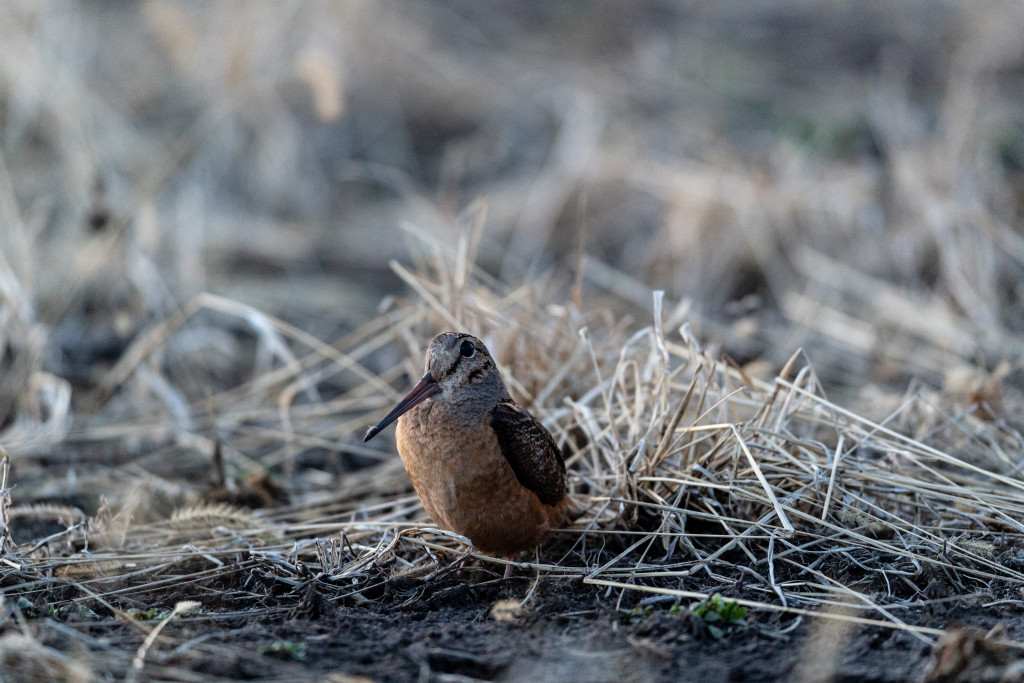
Photo by Eric Fowler
By Joel Jorgensen and Stephen J. Brenner
Photos by Eric Fowler
As winter’s grip begins to loosen in early March, one of the first tangible signs of spring comes in the form of one unusual bird’s evening courtship display. Along with first returning flocks of geese, sandhill cranes and a noticeable northward push of bald eagles, the American woodcock is one of our earliest arriving migratory birds, often laying claim to a small breeding site when snow is still on the ground.
Limited information suggests woodcock has expanded its range in Nebraska since settlement by Euro-Americans, but what do we know about these birds and how they use Nebraska’s diverse landscapes? And how far west have these birds pioneered? Even though the woodcock is both a game species and a species of conservation concern identified by the Nebraska Natural Legacy Project, there never has been a formal study directed on this species in Nebraska, or anywhere in the Great Plains for that matter. Until now.
A recent study by the Nebraska Game and Parks Commission, in partnership with Audubon Nebraska, answered some of these questions and also revealed some unexpected findings about this odd but fascinating species.

Migration and Mating
American woodcock, or timberdoodles as they are sometimes called, can best be described as quirky and are something of an oddity among their shorebird relatives. Woodcock are related to birds like snipes, yellowlegs, sandpipers and curlews. Yet all of these other species are typically associated with shorelines, water and wetlands. The woodcock, as the name implies, is in fact a forest or woodland-dwelling shorebird. It has a peculiar appearance with large eyes set back on its head and a long bill, adaptations that help this bird locate its preferred prey — earthworms — which it finds by probing in moist soil.
Woodcock primarily occur in the extensive forested ecosystems of eastern North America. While several resources and maps still place Nebraska outside of the species’ regular breeding and migratory range, the western extent of its range does, in fact, include eastern Nebraska. Despite this westward expansion, woodcock numbers have declined in eastern North America.
Upon their arrival from areas in the southern U.S., males waste no time engaging in a courtship display. Taking place briefly after sunset and often lasting not more than an hour, the display involves the male making elaborate spiraling flights with twittering wings above an open field. The male eventually lands in a bare patch of ground, where it then makes a series of loud, nasally “peent” calls. After calling, the bird once again takes flight and repeats the display. Males may also briefly display in the mornings before sunrise.
The woodcock’s spring courtship display is about the only time during the year when this species makes its presence known and allows itself to be detected. Just ask any woodcock hunter about how easy it is to find these birds in the fall: It’s a little tricky. Other than when males are displaying, this cryptically colored bird usually stays hidden in dense, shrubby vegetation or woodlands and is generally most active in the morning and evening.
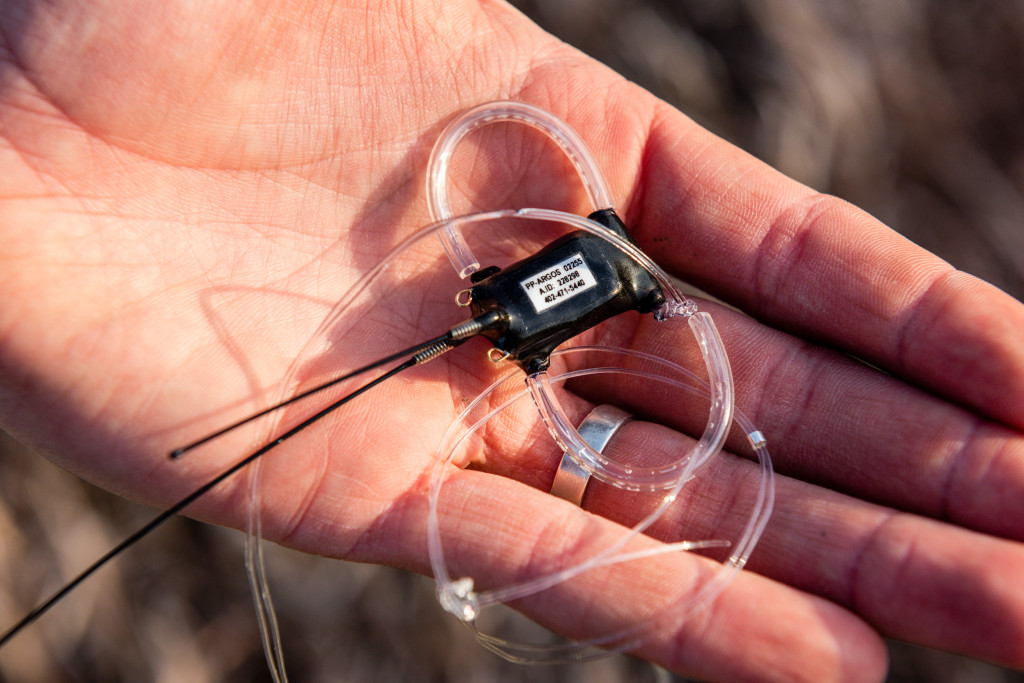
To Catch a Woodcock
Tracking animals to determine their movements and answer questions about habitat use has undergone quite a revolution in the last decade or so. For many years, biologists were relegated to using radio tags that had limited range and required researchers to be relatively close to their subject in order to track the animal and determine its location. Satellite transmitters using GPS technology have greatly improved research capabilities. Not only can an animal be tracked worldwide, location data collected by the satellite tags are sent to a system of satellites that can be downloaded from the comfort of one’s office. A shortcoming for many years, though, is that satellite tags were quite large and heavy, two characteristics that make it difficult to use this technology on all but large bird species.
Satellite transmitters only recently became small enough to place on a bird the size of an American woodcock. There are strict standards and weight limits that must be followed when placing any type of transmitter on a wild bird, rules that ensure that birds are not harmed or impaired by research. The one drawback of using these small transmitters is that they have limited battery life and can only power the transmission of two dozen or so specific point locations.
Satellite transmitters only become valuable if they can be deployed on a bird, and that requires capturing a woodcock. This is a challenge because of the bird’s secretive habits. We trapped woodcock by identifying sites where birds were displaying one evening, returning the next and placing an array of finely-woven mist nets around the display site. Returning birds caught in the nets were immediately removed, and then weighed, measured, banded, outfitted with transmitters and released.

While this scout-and-return method works best for capturing birds in spring, it relies on males returning to the same display location in successive nights to work. If a bird is wary or dislikes changes to his display area, he may find a new location to do his little dance. In addition, the weather needs to cooperate, as wind and precipitation are not conducive for capturing woodcock, and strong south winds might convince a male to migrate north. Such uncertainties are nothing new in wildlife studies, as wild animals rarely, if ever, follow the expectations of the researchers who study them.
Despite these challenges, we not only became competent in capturing woodcock, we were proficient at it by the end of 2022. We focused our efforts away from the Missouri River Valley, trapping birds at wildlife management areas near Lincoln, Norfolk, Genoa and Burwell. During early spring 2021, we captured six woodcock and deployed five satellite transmitters. The following spring, we captured 10 woodcock and deployed 10 additional satellite transmitters. With the birds released and safely on their way, it was now a matter of sitting back and waiting for data points to roll in.
Should I Stay or Should I Go?
Most migratory birds follow the typical pattern of spending the colder months of the year in one place with favorable conditions and then migrating some distance to breeding areas, where they spend the warmer months. Usually these three phases — wintering, migration and breeding — of a bird’s annual cycle are discrete time periods characterized by distinct behaviors. Woodcock, however, appear to blur the lines. Although it might be expected that a woodcock arriving in Nebraska and engaging in breeding activities in spring might be here for the entire summer, data from our satellite transmitters showed this is not always the case.
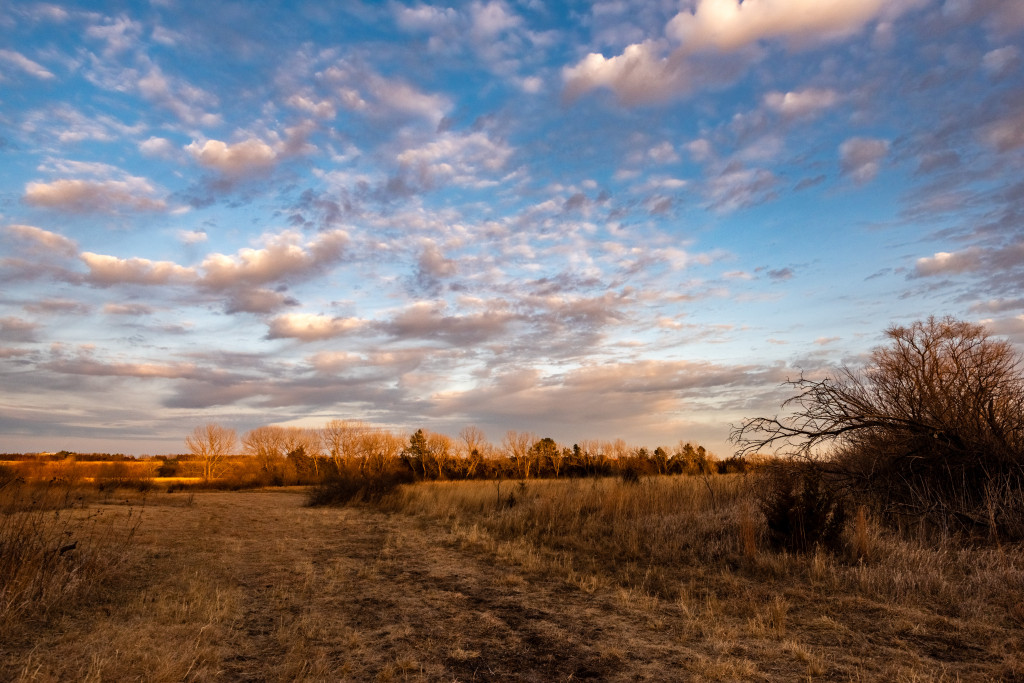
All of the woodcock we captured in Nebraska remained at or near their capture sites for two weeks or more. After spending some time in Nebraska, a majority of the birds undertook substantial flights to points farther north, generally to the extensive woodland areas of Manitoba, Ontario or northern Minnesota. These are areas where the landscapes resemble the classic forested woodcock habitats of their core range. Of the 15 birds captured and outfitted, 11 of them migrated long distances of 300 to 700 miles in a short amount of time and settled in the north woods for the remainder of the spring and summer.
Woodcock engaging in courtship behavior in Nebraska in March and early April are clearly attempting to breed. However, what became apparent is that these birds almost certainly continued to engage in courtship and breeding activity once they left the state after arriving at northern sites. In addition, research from the eastern and southern U.S. indicates that woodcock in Nebraska in March may have already attempted to breed at points farther south during late January or February. Thus, woodcock may breed or attempt to breed multiple times and at multiple locations during their spring migration. Nebraska has only a handful of confirmed breeding records, but successful breeding — a nest where eggs hatch and young survive — in the state is apparently an uncommon or possibly a rare event.
Irrigating Woodcock
Four woodcock we tagged remained in Nebraska during the summer and lived in an environment different from the so-called north woods, and quite different from our typical understanding of what habitat is suitable for this species. In eastern and central Nebraska, the landscape is a mosaic of agricultural fields, grasslands and limited patches of woody vegetation. The latter includes hedgerows planted decades ago, as well as trees and shrubs along stream and river corridors and those invading into remaining grasslands.
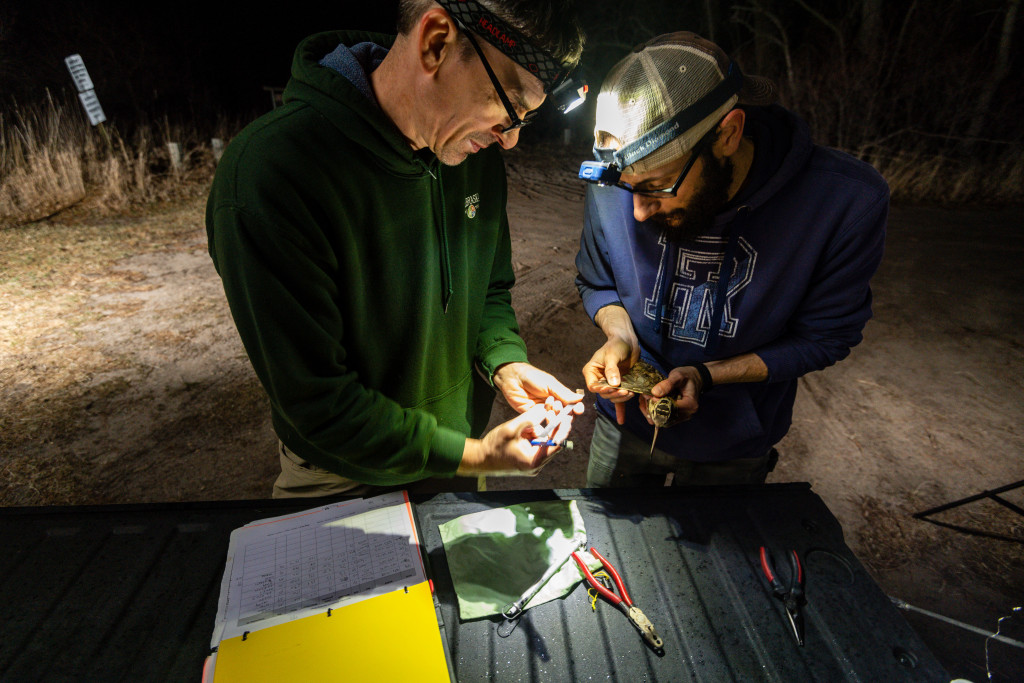
Perhaps one of the most interesting findings of our study is that during the summer, woodcock in Nebraska progressively used irrigated agricultural fields. While woodcock routinely use open areas, including fields, as nocturnal roosting sites, our research showed woodcock using irrigated soybean and corn fields during the day when they were likely feeding. This behavior in Nebraska is quite different from what has been observed in previous studies in eastern North America.
So why would woodcock seek out fields with center pivot irrigation in the summer? The two summers we tracked woodcock in Nebraska were very dry, and soils likely became hard. In addition, with waning moisture levels, earthworms likely retreated deep into the soil. In irrigated fields with moist soil, earthworms likely remained near the top, making them accessible to the woodcock and its long
probing bill.
Thus, it now appears quite possible that irrigated agricultural fields serve as convenient, albeit unconventional, feeding sites for woodcock choosing to spend the summer in Nebraska. What remains unclear is whether woodcock would be able to survive in Nebraska during a drought year without irrigation. Why some woodcock travel to points north while others chose to remain in Nebraska throughout their long summer remains a mystery.
Sandhills Outpost and Grassland Troubles
The Nebraska Sandhills is a landscape associated with greater prairie-chickens and western meadowlarks, not American woodcocks. And yet, at an isolated outpost near Calamus Reservoir we were not only able to locate a displaying woodcock, we were fortunate enough to capture this bird and outfit it with a satellite transmitter. Furthermore, this bird remained at this site throughout the summer, and even spent a few evenings roosting in the pristine Sandhills grasslands west of the reservoir. This is certainly a first in the history of woodcock tracking and represents a remarkably western and atypical record for this species. The fact that woodcock occur this far west in Nebraska is perhaps all the evidence that is needed to demonstrate this species has expanded its range here since Euro-American settlement.
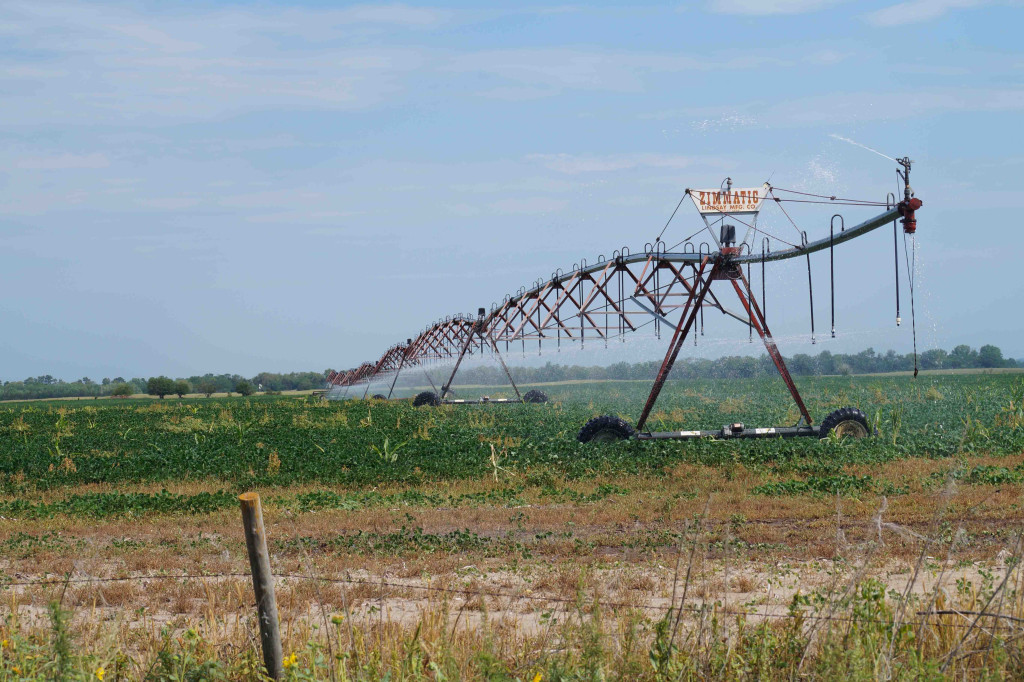
At this point in the story, however, some interesting questions arise. What is a forest-dwelling shorebird doing in the largest remaining continuous grasslands in the world? And why are Nebraska woodcock having to select unusual habitats both during migration and during the summer in the first place? Nebraska is many things, but it is hardly ever described as forested, particularly prior to Euro-American settlement and west of the Missouri River.
This apparent woodcock expansion in the Cornhusker state coincides with a similar westward range expansion in Manitoba during the same period. Our satellite transmitter data show that some birds tagged locally fly directly north to Manitoba, indicating there is a possible link between range expansion in Nebraska and central Canada. However, is the range expansion of the American woodcock something to celebrate, or should it cause concern?
Woodcock populations have indeed declined throughout most of their range as modern forestry and land use practices have reduced the extent of early-successional forests, a key habitat requirement for the species. Expansion in Nebraska has largely been driven by the expansion of woody vegetation west along major river valleys. Woody invasion of grasslands may have provided an opportunity for this species to expand westward in the state, but for grassland ecosystems, woody encroachment can spell trouble for grassland bird populations, many of which are declining because of habitat loss.
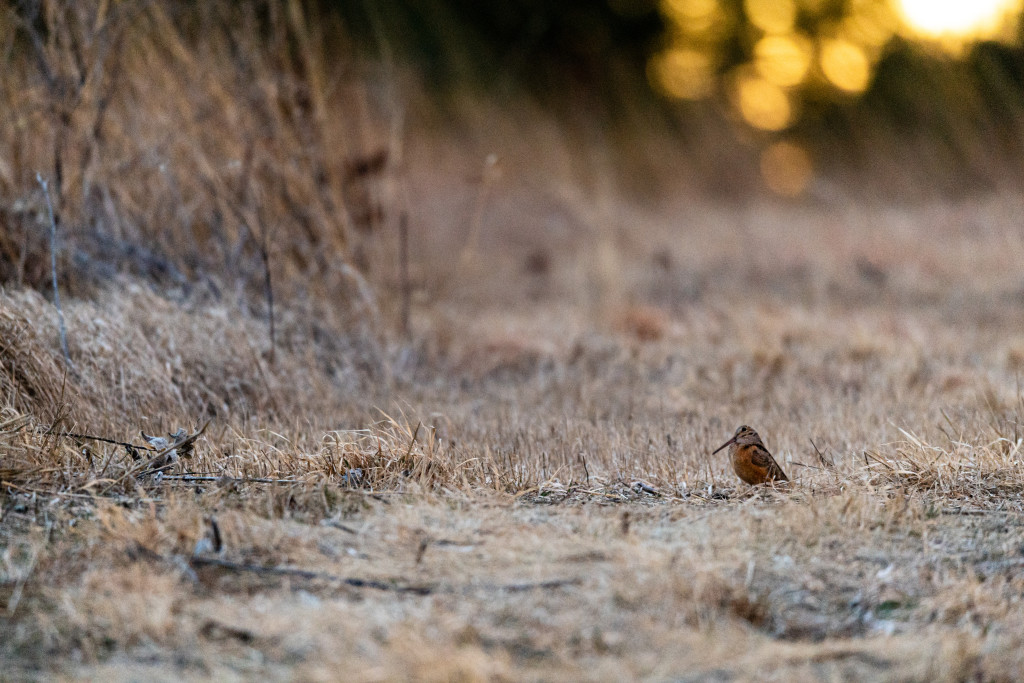
Fortunately, woodcock are unlikely to compete with any grassland species given the rather large gaps between the habitat, forage and environmental requirements of these weird forest shorebirds and grassland birds. Seeing these birds in such an unusual location offers a unique birding experience, but additional westward spread of this species in Nebraska will reflect an additional loss of grasslands. Furthermore, wooded and shrubby areas in eastern Nebraska, including those on wildlife management areas, seem to be offering adequate habitat for this and other woodland species.
A Pioneering Bird
As another winter gives way to spring, woodcock will again return to sites in eastern and central Nebraska to perform their curious courtship display. Certainly a few will try to nest and summer in the state. Woodcock that come to Nebraska are, in many ways, pioneers pushing the limits of their existence, and this research has provided many new revelations and information about the bird, both within the state and beyond.
Keep an ear out early this spring, on the first calm and mild evening just after the sun sets, for a nasally peent and a twittering flight, for the story of woodcock in Nebraska is certainly a unique and fascinating saga. ■
 Nebraskaland Magazine
Nebraskaland Magazine
